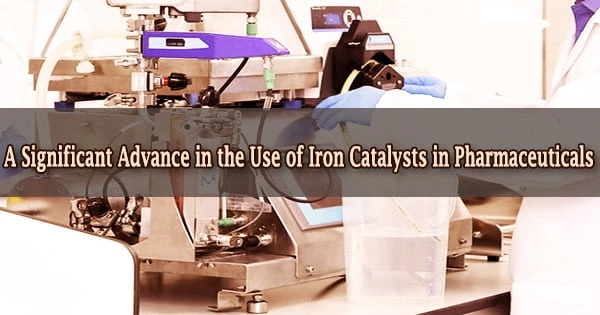Iron would be the most promising but disruptive member of a classroom full of transition metals that may be exploited as catalysts for sophisticated pharmacological processes.
Researchers from the University of Rochester and the University of Maryland have developed and described a new type of reaction that might push iron to the front of the class, allowing for the single-step synthesis of hitherto difficult-to-make drug-like molecules. Their findings were published in the journal Science.
“This is a tremendous leap forward in developing effective and practical iron-based reactions that the pharmaceutical industry could utilize,” says Michael Neidig, the Marshall D. Gates, Jr. Professor of Chemistry at Rochester, whose research group collaborated with that of associate professor of chemistry Osvaldo Gutierrez at Maryland, before Gutierrez moved to Texas A&M in August 2021.
Iron: a better catalyst than palladium for chemical synthesis
Transition-metal catalyzed cross-coupling reactions are one of the most extensively utilized chemical synthesis techniques. Palladium is a transition metal catalyst that is commonly employed in industrial and academic labs for these reactions. Palladium is effective, but it is scarce, costly, and poisonous, which is why the Neidig and Gutierrez laboratories have been developing iron substitutes.
Iron has been undeveloped in part because when it is bonded to carbon in these processes, the resultant organoiron molecule may be exceedingly unstable and difficult to manage, despite the fact that it is plentiful, inexpensive, and generally harmless.
While most cross-couplings employed in these reactions involve combining two molecules, Gutierrez’s group was able to construct three-component couplings, enhancing the reaction’s potential for connecting with several compounds. Co-lead author Maria Camila Aguilera, a Ph.D. student in Neidig’s lab thoroughly studied the reaction.
Aguilera’s effort included replicating the precise crystal structure of each of the four “species” of iron employed in the reaction and photographing them. She then characterized each of the species to figure out which one began the reaction and what function the other three performed at different stages.
Maria Camila Aguilera, a Ph.D. student, is a co-lead author of a publication that describes a unique iron-based cross-coupling process. Professor Michael Neidig says Aguilera’s analysis “sets the framework to continue the development of iron-based reactions in a rational, mechanistically driven way.” (University of Rochester photo / J. Adam Fenster)
“It was a very challenging project,” says the fourth-year Ph.D. student who came to Rochester after completing a BS in chemistry at the Universidad Nacional de Colombia. “But I was very excited about it because it allowed me to really dig into a very different type of chemistry.”
Neidig says that Aguilera used an array of spectroscopy tools and a unique cryogenic infrastructure that allowed lab to “study unstable organoiron compounds that very few chemistry labs in the world can.” Her analysis “sets the framework to continue the development of iron-based reactions in a rational, mechanistically driven way,” he adds.
The reaction might require more tweaking and development. But when it comes to that task, the fundamental mechanistic framework we established will be so important in helping people think about how to make this system better and more efficient.
Michael Neidig
A promising advance in drug development
What are the prospects for implementation in drug development?
“I think it’s a reaction that will be attractive to pharmaceutical companies,” Neidig says.
“The reaction might require more tweaking and development,” he adds. But when it comes to that task, “the fundamental mechanistic framework we established will be so important in helping people think about how to make this system better and more efficient.”
The strong working connection that evolved with Gutierrez’s lab was lauded by both Aguilera and Neidig, especially considering the rarity of laboratories ready to engage with iron-catalyzed cross-coupling processes due to the high dangers and poor benefits.
“Osvaldo is an incredible collaborator,” Aguilera says. “He is very willing to share his knowledge, and so it was a pleasure to work with him.”
The National Institutes of Health and the National Science Foundation are both financing the initiative.





